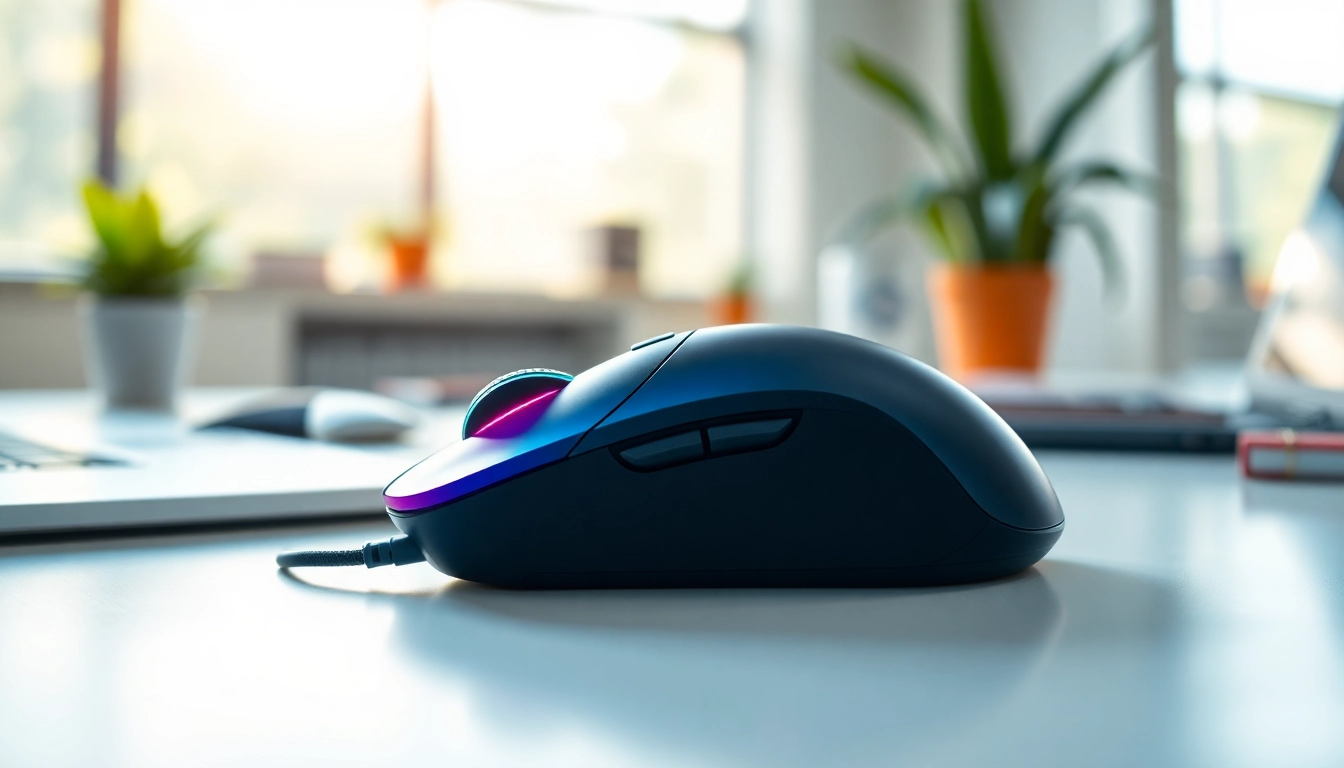Understanding the Different Types of Mouse
The evolution of the Mouse has been remarkable, transforming from a simple tool for navigating computer interfaces to a highly specialized device tailored to various user needs. At its core, understanding the different types of mice is essential for anyone who regularly engages with digital technology. Whether you are a casual internet surfer, a professional gamer, or an office worker, the right mouse can significantly impact your user experience.
Wired vs. Wireless Mouse
When selecting a mouse, one of the first decisions is whether to go for a wired or a wireless model. Each option has its unique advantages and potential drawbacks.
- Wired Mouse: This traditional option connects to your device through a USB cable. Advantages include a reliable connection with no battery dependency, making them consistent for use. Wired mice are typically favored for gaming due to their minimal lag and high responsiveness.
- Wireless Mouse: These offer a cable-free experience, enhancing mobility and reducing desk clutter. Wireless mice utilize Bluetooth or RF technology to connect to a computer, providing flexibility and convenience. However, they require batteries and may experience connectivity issues or lag in certain situations.
Ergonomic Mouse for Comfort
As many people spend considerable hours using their computers, ergonomics plays a crucial role in the design of a mouse. An ergonomic mouse is specifically crafted to conform to the natural shape of the hand, reducing strain and the risk of repetitive strain injuries (RSIs).
Choosing an ergonomic model can help maintain a more natural wrist position, thus enhancing comfort during prolonged usage. Many ergonomic mice also provide customizable features, allowing users to adjust buttons and settings according to their individual preferences.
Specialized Mice for Gaming
Gamers require highly specialized mice that can offer precise performance and responsiveness. Gaming mice typically come equipped with higher DPI settings (dots per inch) allowing for faster cursor movement without sacrificing accuracy. Additional features include customizable buttons for in-game commands and adjustable weights for personalized handling.
Furthermore, many gaming mice have customizable RGB lighting, not only adding aesthetic flair but also giving users the option to indicate profiles or modes easily. The functionality of these tools can significantly enhance gaming performance, providing a competitive advantage.
Key Features to Consider When Buying a Mouse
DPI and Sensitivity Settings
DPI, or dots per inch, is a pivotal feature to consider when purchasing a mouse. Higher DPI settings typically result in faster cursor movement across the screen, which can be crucial in fast-paced gaming or design work. A mouse with adjustable DPI settings allows users to switch between sensitivity levels, ensuring optimized performance depending on the task.
Battery Life and Charging Options
For wireless mice, battery life is a critical consideration. Many models boast extended battery life, with some offering months of usage on a single charge. Others might use rechargeable batteries, ensuring that users can quickly regain functionality without the need to replace batteries frequently. When comparing options, consider the charging method as well; some models offer convenient wireless charging pads, while others may rely on USB charging.
Design and Aesthetics
While functionality is paramount, the design of a mouse also matters. A well-designed mouse should feel good in the hand, with buttons that are easy to reach and operate. Additionally, the aesthetics of the mouse can be appealing, particularly for those who use multiple peripherals. Manufacturers now offer various styles and colors that can complement personal setups, allowing users to express their individuality while working or gaming.
How to Properly Set Up Your Mouse
Connecting to Devices
The initial step to utilizing a new mouse is establishing a connection to your device. For wired mice, this is often as easy as plugging it into a USB port. Wireless mice, on the other hand, will require pairing with your device via Bluetooth or a USB receiver. Follow the instructions provided in the user manual specific to the model you are using.
Tweaking Settings for Optimal Performance
Upon connection, accessing the mouse settings through your device’s control panel allows for customization. Users can adjust settings such as pointer speed, scroll speed, and button assignments based on personal preferences. These modifications can vastly improve efficiency and comfort during use.
Maintaining and Cleaning Your Mouse
Regular maintenance is essential to ensure longevity and performance. Dust and grime can accumulate on surfaces and sensors, potentially impacting performance. Clean the exterior with a damp cloth and periodically check the sensor for dust particles. Some mice come with removable parts that can be cleaned separately, which can contribute to the overall hygiene of your workstation.
Common Problems and Troubleshooting for Mouse
Connectivity Issues
One of the most common issues users face involves connectivity, particularly with wireless models. If your mouse isn’t responding, check the status of the batteries or ensure that the USB receiver is correctly plugged in. If problems persist, refer to the troubleshooting section in the user manual for guided solutions.
Button Responsiveness Problems
Over time, buttons may become sluggish or unresponsive. This can stem from debris buildup or mechanical failure. Users should verify that the mouse is clean and free from obstructions. If the issue continues, it may require a service or replacement.
Tracking Accuracy Concerns
Consistent tracking accuracy is essential for optimal performance, especially in gaming and design tasks. If you notice erratic cursor movements, it could be due to a dirty sensor or unsuitable mouse surface. Ensure that the tracking surface is clean and suited for optical or laser mice. In some cases, adjusting DPI settings can also resolve tracking concerns.
Innovations and Trends in Mouse Technology
Wireless Charging Capabilities
As technology advances, so do the features of the mouse. Wireless charging has emerged as a popular trend, particularly among high-end models. This innovation allows for convenient, cable-free charging, ensuring that users don’t have to deal with power cables while using their devices. Many brands are producing pads that simultaneously offer charging and functionality, merging convenience with performance.
Customizable Controls and Features
Modern mice are increasingly designed with customizable controls, allowing users to assign specific functions to buttons based on their needs. This flexibility can enhance productivity for varied tasks, whether it’s navigating through complex software or executing in-game commands. The ability to customize settings can lead to increased comfort and efficiency for different workflows.
Health-focused Ergonomic Innovations
With growing awareness about work-related injuries, manufacturers are focusing more on ergonomics. Innovative designs include vertical mice, trackball mice, and other shapes that promote healthier hand positions. These features are essential for those spending significant time on computers and looking to mitigate discomfort or long-term health issues.







